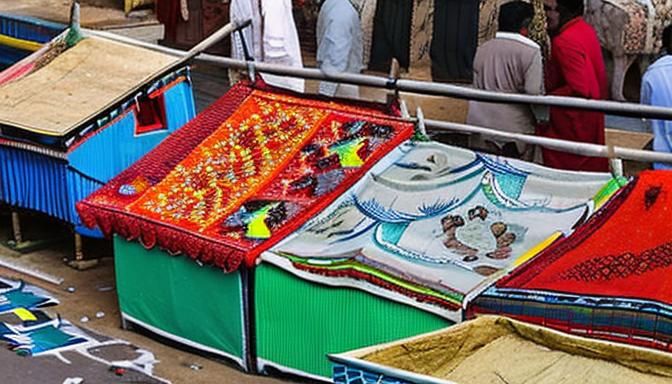Karachi is not just a city; it’s a living, breathing tapestry of stories. Each street corner, bustling market, and quiet alley holds whispers of the past. When you listen to the elderly residents, you’re not just hearing tales; you’re diving into the very essence of what makes this city tick. Their voices carry the weight of history, filled with memories that paint a vivid picture of resilience and community spirit.
Imagine sitting down with a grandparent, a cup of tea in hand, as they recount their childhood adventures. They talk about how the city has transformed over the decades. From the days of simplicity to the fast-paced life we see today, these stories provide a window into Karachi’s evolution. The elders share not only their personal experiences but also the collective memory of a city that has seen both triumph and turmoil.
These oral histories are crucial. They help us understand the cultural fabric of Karachi. Each story, whether about the struggles during tough times or the joy of community celebrations, adds a layer to our understanding. It’s like stitching together a quilt, where every patch tells a different story yet contributes to the whole. By capturing these narratives, we preserve a legacy that might otherwise fade away.
So, next time you find yourself in Karachi, take a moment. Listen. You might just discover the heartbeat of the city through the tales of its elders.
The Voices of Karachi’s Elders
When you walk the bustling streets of Karachi, have you ever paused to think about the stories that echo through its alleyways? The elderly residents of this vibrant city hold a treasure trove of memories. Their experiences are like colorful threads woven into the city’s fabric, capturing decades of change and resilience. Imagine sitting with a grandparent, listening to tales of a Karachi that once was—a place of simple joys and profound challenges.
These elders are not just witnesses; they are the storytellers of our past. Each narrative they share is a window into the city’s evolution. For instance, one might recount the time when Karachi was a small port town, bustling with traders from all over the world. Another might share how the city transformed during times of conflict, showcasing the spirit of its people. Their words reflect a rich legacy that shapes our understanding of Karachi today.
Listening to these stories is essential. It helps us appreciate the community spirit that defines Karachi. It reminds us that behind every corner, there’s a story waiting to be told. So, next time you meet an elder, take a moment. Ask them about their life. You might discover a piece of Karachi’s history that resonates deeply with you.

Cultural Tapestry of Karachi
Karachi is not just a city; it’s a melting pot of cultures, traditions, and stories. The vibrant streets echo with the voices of its diverse communities. Each corner you turn reveals a new tale, a new memory waiting to be shared. Have you ever stopped to listen to the elders? They hold the keys to the past. Their stories are like threads in a grand tapestry, weaving together the rich history of this bustling metropolis.
Listening to these oral histories is like stepping into a time machine. Imagine sitting with someone who witnessed the city’s evolution from a small fishing village to a sprawling urban landscape. They recount tales of resilience, community spirit, and the challenges faced along the way. It’s not just about the events; it’s about the emotions, the laughter, and sometimes, the tears.
These narratives foster understanding among Karachi’s inhabitants. They remind us that despite our differences, we share a common thread. The city thrives on diversity, and it’s this diversity that creates a rich cultural fabric. From the bustling bazaars to the serene beaches, every aspect of Karachi reflects its unique identity.
So, what are some of the cultural influences that shape this city? Here are a few:
- Languages: Karachi is home to numerous languages, each telling a different story.
- Festivals: Celebrations like Eid and Basant bring people together, showcasing unity in diversity.
- Cuisine: The mix of flavors—from spicy biryanis to sweet mithai—reflects the city’s multicultural essence.
In essence, Karachi’s cultural tapestry is a beautiful blend of stories and experiences. By listening and sharing these oral histories, we not only honor the past but also pave the way for future generations to appreciate the richness of their heritage.
Frequently Asked Questions
- What are oral histories, and why are they important?
Oral histories are personal accounts and stories shared by individuals, often passed down through generations. They are crucial because they provide unique insights into cultural and social dynamics, helping us understand the evolution of cities like Karachi.
- How do the stories of Karachi’s elders influence the city’s culture?
The stories of Karachi’s elders capture the essence of resilience and community spirit. They reflect the challenges and triumphs faced by the city, shaping its identity and fostering a sense of belonging among residents.
- What role does diversity play in Karachi’s cultural tapestry?
Diversity is the heartbeat of Karachi’s cultural tapestry. Different communities contribute their unique traditions and narratives, creating a rich mosaic that enhances mutual understanding and appreciation among the city’s inhabitants.
- How can I contribute to preserving Karachi’s oral histories?
You can help preserve oral histories by recording interviews with elders, sharing their stories through social media, or participating in community projects aimed at documenting these invaluable narratives.